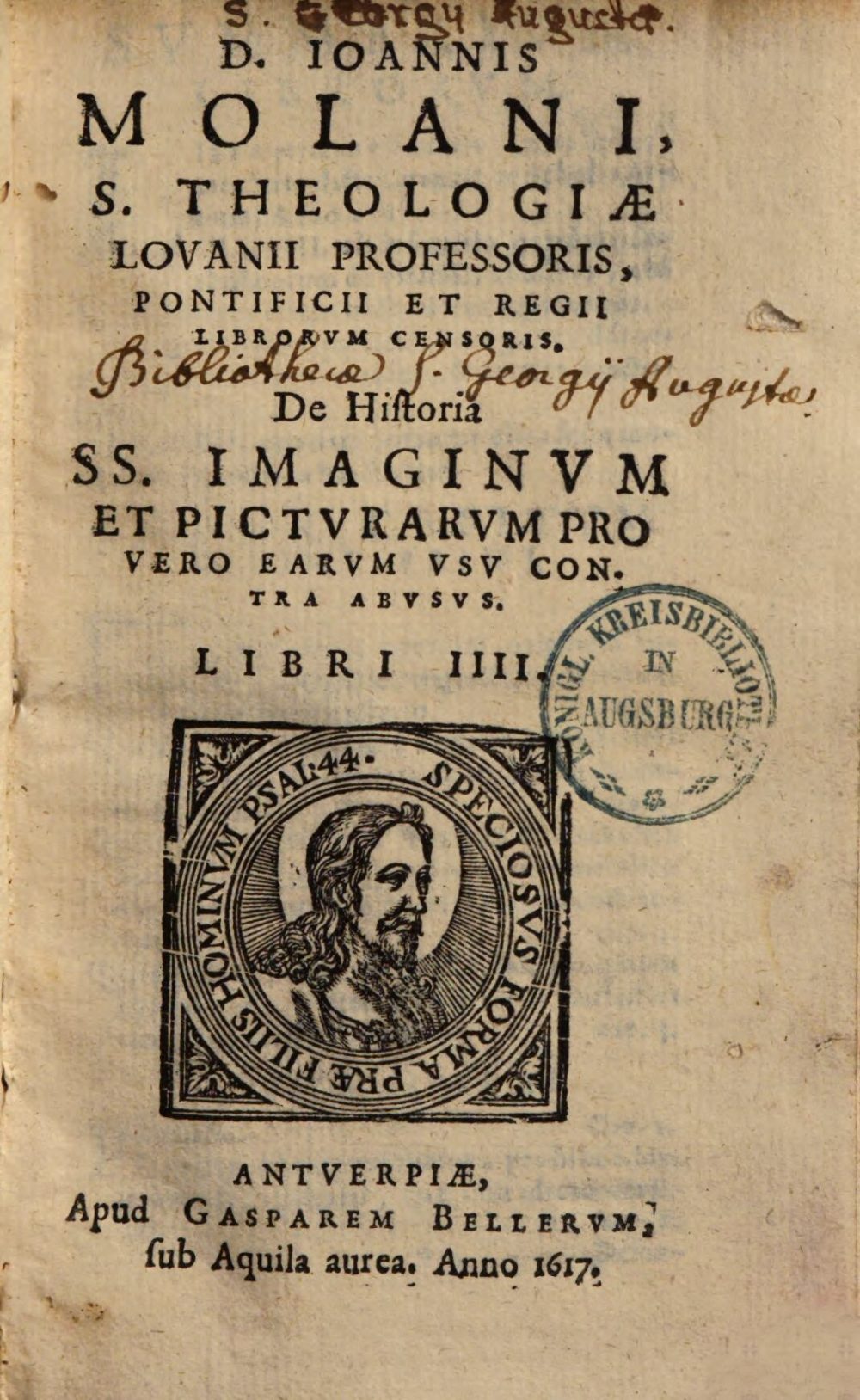
Augsburg, Staats- und Stadtbibliothek — Th H 1475. Digital Reproduction: München, Bayerische Staatsbibliothek, 2015.
Molanus argues that also in profane art artists do not have full liberty of expression, because natural law prohibits this. Again, the relationship between art and writings is used by the author to make his argument, and he pleads for a similar treatment of licentious art as that of licentious or heretical books.
Moreover, even in profane representations, painters do not have to dare everything. Who ignores that licentious images are forbidden by natural law in the same way as heretical or licentious books? Therefore, it is with good reason that images and sculptures of this kind offered for sale are torn down and destroyed by the secular arm since they deserve to disappear along with the obscene books.
“Imo, ne in prophanis quidem picturis quidlibet audendum est a pictoribus. Quis enim nesciat obsoenas imagines iure naturae perinde prohibitas esse atque libros sive haereticos sive obscoenos? Quare eiuscemodi Imagines et sculpture venum propositae, rectissime per saecularem magistratum omnes auferuntur et abolentur, dignae quae cum libris obscoenis pereant.”
Molanus 1996, 126.



